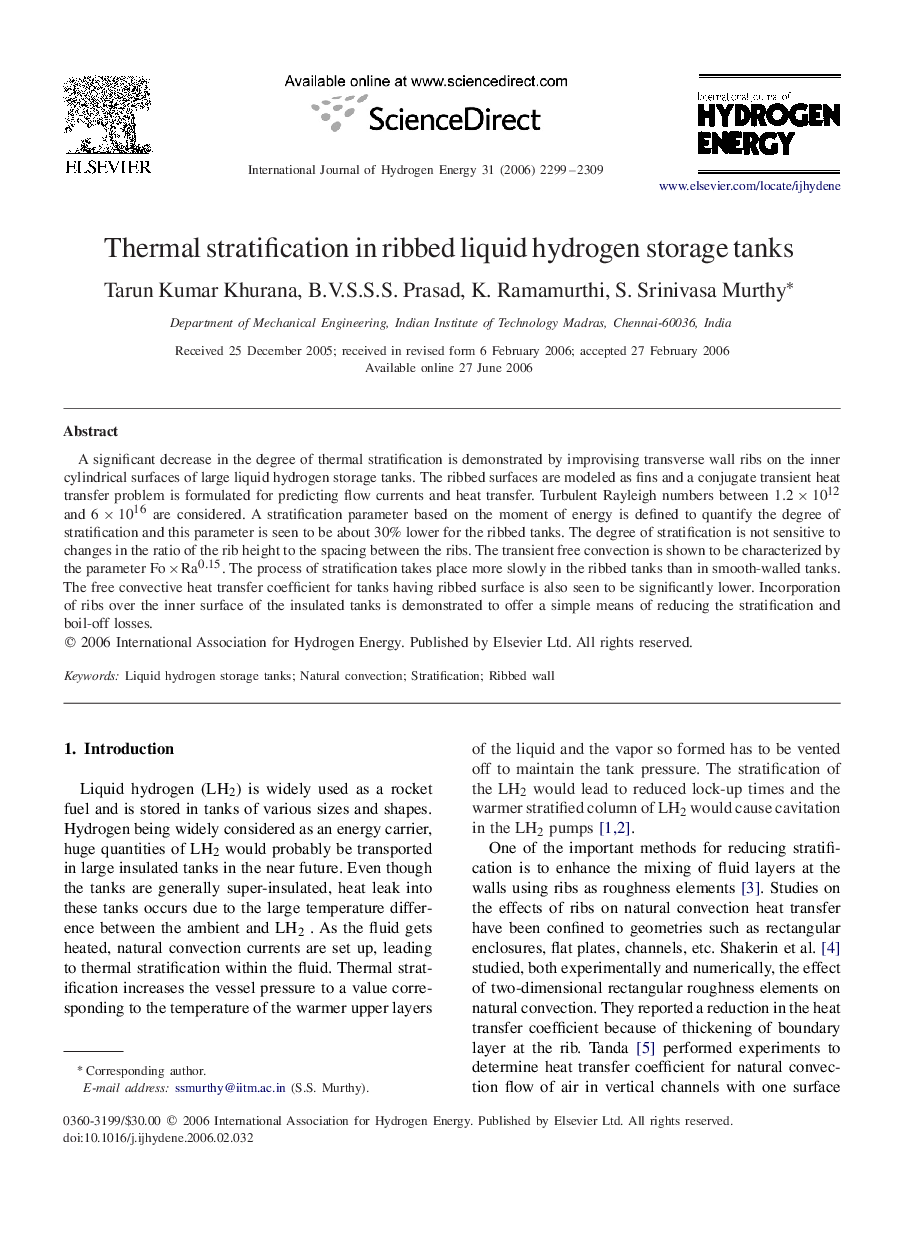| Article ID | Journal | Published Year | Pages | File Type |
|---|---|---|---|---|
| 1280400 | International Journal of Hydrogen Energy | 2006 | 11 Pages |
A significant decrease in the degree of thermal stratification is demonstrated by improvising transverse wall ribs on the inner cylindrical surfaces of large liquid hydrogen storage tanks. The ribbed surfaces are modeled as fins and a conjugate transient heat transfer problem is formulated for predicting flow currents and heat transfer. Turbulent Rayleigh numbers between 1.2×10121.2×1012 and 6×10166×1016 are considered. A stratification parameter based on the moment of energy is defined to quantify the degree of stratification and this parameter is seen to be about 30% lower for the ribbed tanks. The degree of stratification is not sensitive to changes in the ratio of the rib height to the spacing between the ribs. The transient free convection is shown to be characterized by the parameter Fo×Ra0.15Fo×Ra0.15. The process of stratification takes place more slowly in the ribbed tanks than in smooth-walled tanks. The free convective heat transfer coefficient for tanks having ribbed surface is also seen to be significantly lower. Incorporation of ribs over the inner surface of the insulated tanks is demonstrated to offer a simple means of reducing the stratification and boil-off losses.
